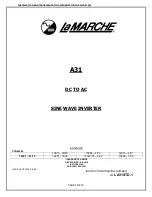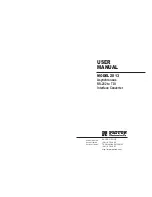
NAV E 501 and NAV E 101 Encoders • Installation and Basic Operation
8
Analog audio connectors
See figure 4 to wire a connector for the appropriate input type. Connectors are included
with the encoder, but you must supply the audio cable. Use the supplied tie-wrap to strap
the cable to the extended tail of the connector.
Unbalanced Stereo Input
Balanced Stereo Input
Do not tin the wires!
Tip
Ring
Tip
Ring
LR
Sleeves
Tip
Sleeve
Sleeve
Tip
LR
Figure 4.
Captive Screw Connector Wiring for Audio Inputs
NOTES:
•
The length of exposed wires is important. The ideal length is 3/16 inch (5 mm).
•
If the stripped section of wire is longer than 3/16 inch, the exposed wires may
touch, causing a short circuit.
•
If the stripped section of wire is shorter than 3/16 inch, wires can be easily pulled
out even if tightly fastened by the captive screws.
•
Do not tin the power supply leads before installing them in the connector. Tinned
wires are not as secure in the connector and could be pulled out.
A balanced stereo audio connector consists of a tip, ring, and
Sleeve ( )
Ring (-)
Tip (+)
3.5 mm Stereo Plug Connector
(balanced)
sleeve. An unbalanced mono audio connector consists of a tip
and sleeve. When you are making connections for the units
from existing audio cables, see the drawing at right to identify
the tip, ring, and sleeve parts of the connector. The ring, tip,
and sleeve wires are also shown on the captive screw audio
connector diagram (see figure 4).
Control connector wiring
Figure 5 shows how to wire the Control RS-232/IR connector.
Tx
Rx
Rx
Tx
Gnd
IR Device
RS-232 Device
RS-232
Tx
Rx
GS
G
IR
CONTROL
Figure 5.
Control Connector Wiring
NOTES:
•
The IR S and G line pair and the RS-232 Tx and Rx line pair must each cross once
between this connector and the source or destination.
•
The length and preparation of exposed wires is important (see the audio connector
above for details).
















































